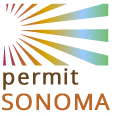Unpermitted ADUs and JADUs

Changes to State Law regarding Accessory Dwelling Units (ADUs) and Junior Accessory Dwelling Units (JADUs) went into effect on January 1, 2025. State Law now provides a pathway for permitting certain existing unpermitted ADUs and JADUs.
Pursuant to Government Code Section 66332, Permit Sonoma will not deny a permit for an existing unpermitted ADU or JADU that was constructed before January 1, 2020, unless the building is considered substandard pursuant to Health and Safety Code Section 17920.3. Permit issuance will not be contingent on other standards for development, such as setbacks, size, and height restrictions.
What if my unpermitted ADU or JADU was constructed on or after January 1, 2020?
The County’s ADU Rescue program allows delayed enforcement against ADUs constructed without permits and may still be applicable to unpermitted ADUs constructed between January 1, 2020, and October 14, 2021.
See 9-4-19 Permits to Remove or Legalize Unpermitted Work for information on legalizing or demolishing unpermitted ADUs or JADUs constructed on or after January 1, 2020.
How do I know if my ADU or JADU is substandard?
“Substandard” means any condition defined by California State Health and Safety Code Section 17920.3, which exists to an extent that it endangers the life, limb, property, safety or welfare of the public, nearby residents, or occupants.
- The PJR-154 Substandard Conditions Self-Assessment Checklist (PDF) provides a list of each condition specified in Section 17920.3. This checklist is informational and not a requirement of application submittal.
Before preparing an application, homeowners may obtain a confidential third-party code inspection from a licensed contractor to determine the unit’s existing condition or potential scope of building improvements needed.
This will not be considered a substitute for the required County site inspection as set forth in the permit process outlined below.
How do I permit my unpermitted ADU or JADU?
To permit an unpermitted ADU or JADU, the unit must meet the following eligibility criteria, and the property owner must follow the permit process outlined below.
Eligibility Criteria
Your unpermitted ADU or JADU may be eligible for a permit if…
- It was constructed prior to January 1, 2020; and
- It is not considered substandard under Section 17920.3 of the Health and Safety Code.
Permit Process
- Submit a Building Permit with Plan Check (BLD) application following 4-0-13 Submittal Checklist for Unpermitted ADUs and JADUs (coming soon) including:
- A proposal statement which specifies you are applying to permit your unpermitted ADU or JADU under Government Code Section 66332.
- Documentation demonstrating the ADU or JADU was created prior to January 1, 2020.
- Plans and documents which adequately demonstrate the building is not substandard as defined in Health and Safety Code Section 17920.3.
- Pay initial fees for application review.
- Planning division staff will review submitted documentation to verify the time of construction.
- Building division staff will review plans and supporting documents for consistency with Section 17920.3 of the Health and Safety Code.
- Schedule a site inspection with Permit Sonoma staff to confirm the unit’s existing condition is not substandard as defined in Section 17920.3.
- Noncompliance with health and safety standards found during the inspection will not result in penalization.
- The inspector may provide recommendations to comply with health and safety standards necessary to obtain a permit.
- If necessary, make recommended corrections to obtain a permit and schedule a new inspection.
- Pay final fees for inspection and permit issuance.
- Impact fees or connection or capacity charges will not be required except when utility infrastructure is required to comply with Health and Safety Code Section 17920.3 and when the fee is authorized by Government Code Section 66324 subdivision (e).
- Receive your permit.
Why should I permit my ADU or JADU?
- Reduce the risks to the occupants. ADUs that are unpermitted may unknowingly present serious health and safety risks to the occupants.
- Reduce liability. An illegal ADU would pose as a significant liability to the owner. For example, insurance would not cover damages if a fire started in the unit.
- Increase your property value. Improve the potential for both the rental income and/or resale value by legalizing the ADU.
- For your peace of mind. Legalizing your ADU can eliminate any worries about code enforcement actions against you.
Resources
- PJR-154 Substandard Conditions Self-Assessment Checklist (PDF)
- 4-0-13 Submittal Checklist for Unpermitted ADUs and JADUs (coming soon)
- Health and Safety Code Section 17920.3
- Government Code Section 66332
- Frequently Asked Questions

 Translate
Translate